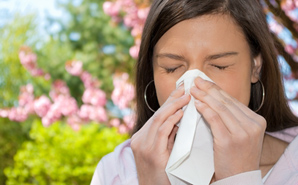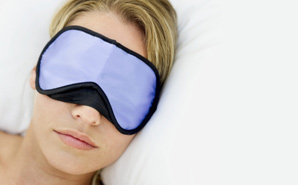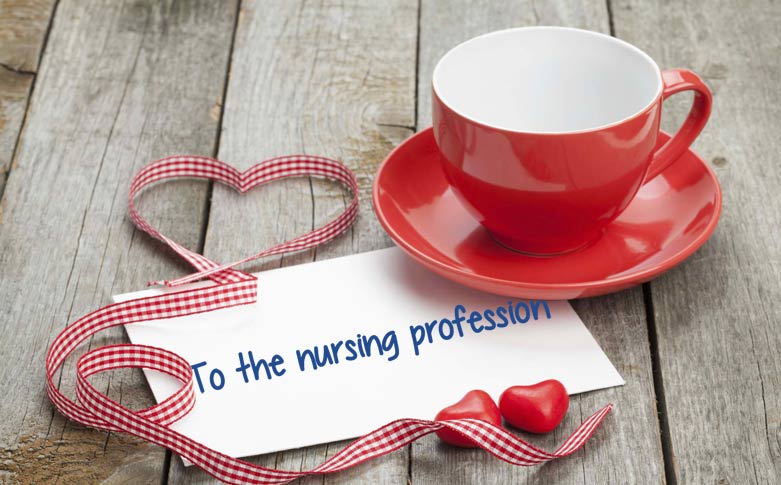Each year fashion magazines feature the season’s hottest color, and you can find clothing items in stores around the country in shades of the latest fashion. Well, in Atlanta, I’m calling yellow the new black. Shades of yellow not only found on clothes but found on top of cars, on sidewalks, on my window sill, in my hair, on my dog…
Code yellow. Yes, my friends, it’s pollen season at its finest. And lucky for me, my body has yet to be tortured by the devastating allergic effects of such a nuisance. But there are some people in the area that literally have to leave the state this month or else wheeze their way through the severe spring allergies.
Allergies are a tricky little concept that some would categorize as autoimmune conditions. It is your body’s reaction to fending off an “invader,” where sometimes these invaders may be innocent foreign substances. The body prepares to fight off these substances such as pollen, dust, certain foods, or even the family dog and its dander, by releasing histamines that create an inflammatory response in the airways and secretion production in oral and nasal passages. These reactions can range from a mild cases of the sniffles and watery eyes to severe breathing difficulties, head congestion, and headaches.
Before living in Atlanta, the land of the spring pollen invasion, I didn’t know the first thing about treating allergies. Then I gained a pharmacist as a roommate and heard the stories of entire stores selling out of all allergy medications in mere hours. Medical therapy includes a variety of options that hone in on specific symptoms including nasal and oral decongestants (Afrin, Sudafed), nasal steroid anti-inflammatory sprays (Flonase, Nasonex), and anti-histamines ranging from over-the-counter Claritin to prescription Allegra and Zyrtec. Eyedrops and common asthma medications can also help reduce symptoms. From my highly impacted allergic friends, they say the best treatment is finding a combination of medications that work most effectively for your symptoms. Recently people have been turning to holistic measures in treating nagging allergies such as acupuncture and herbal therapies including Buterber, Quercetin, and Stinging nettle plants.
I will say I had to question a friend’s mental state when one day she told me that her favorite therapy during allergy season involved use of a neti-pot. What is a neti-pot you ask? Well, it’s a container used for nasal irrigation containing a special recipe of warm water, salt and baking soda, clearly. She swears by nasal irrigation, I swear I would drown. To each his own I suppose.
Allergy shots have become the latest and greatest craze as well for dealing with the burden of the pollen. The idea behind the allergy shot is exposing your body to gradually increasing doses of an allergen until you become tolerant of it. In people who see a response to allergy shots, they can provide relief to the individual for years at a time. A yet-to-be FDA approved medical therapy similar in concept to allergy shots is sublingual immunotherapy, where the allergens are introduced under the tongue and absorbed by the GI tract instead of in subcutaneous fashion. Of course, the most foolproof way to treat an allergy is to simply avoid it. However, in the case of pollen, where it literally hangs in the air and covers everything in sight, avoiding it would mean going into hibernation for the spring season. Unfeasible? Try these tips:
- Keep windows and doors closed, as tempting as it might be to open them in the nice spring weather.
- Use an air filter in the house and air conditioner in the car.
- Wear a pollen mask when mowing or house-cleaning (or in Atlanta’s case, all the time).
- Wash your hair after going outside, wash your dog after he/she goes outside.
- Move to Alaska.
Finally, for those wondering if their nagging congestion or red, watery eyes are allergy related or simply a winter cold going strong, there are certain allergy tests that can be done such as the skin prick test or a blood test called the RAST test. Some of these tests can even reveal what allergens are most reactive in a person, therefore allowing that individual to avoid the triggers.
A recent day in Atlanta harbored one of the highest pollen counts logged in years. Although I’m fortunate to fare the season with some mere “crying eyes,” I feel for those people who must hover indoors despite the beautiful spring temperatures. The good news about pollen season? A good rain will wash most of it away and decrease pollen counts considerably. More good news? Yellow is a flattering color on most. Â Happy pollen season!


















